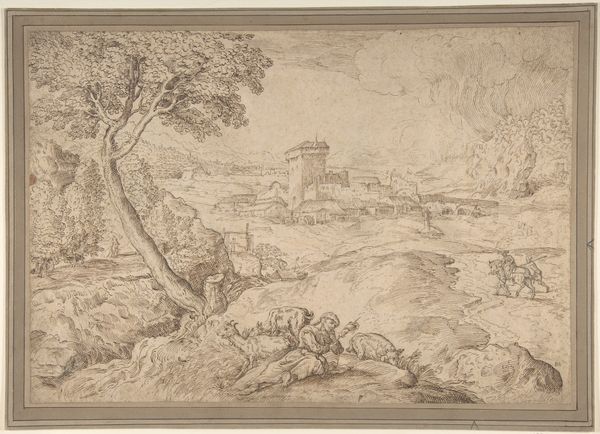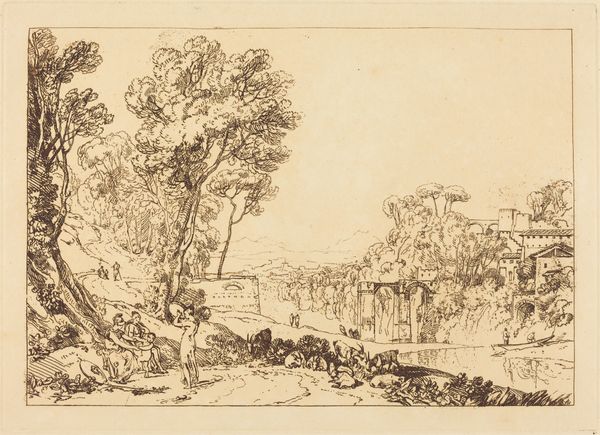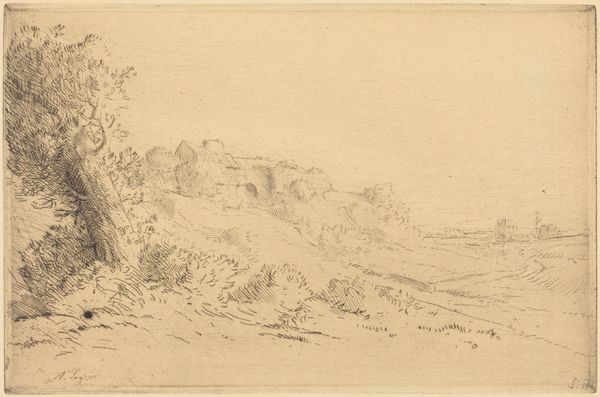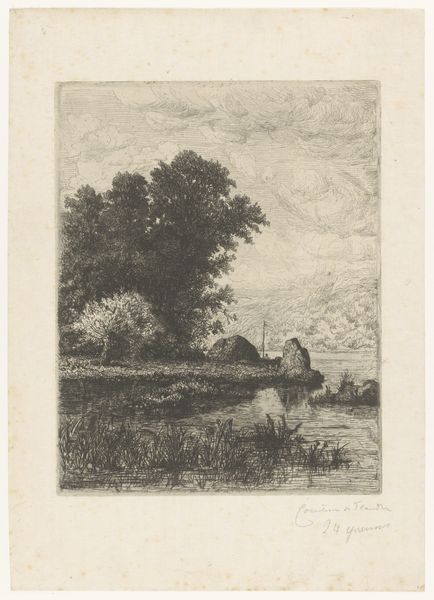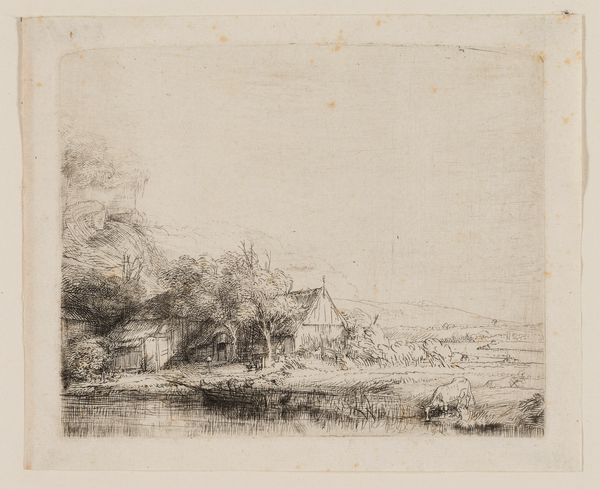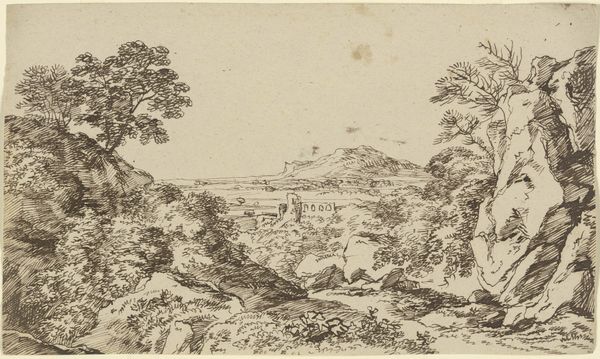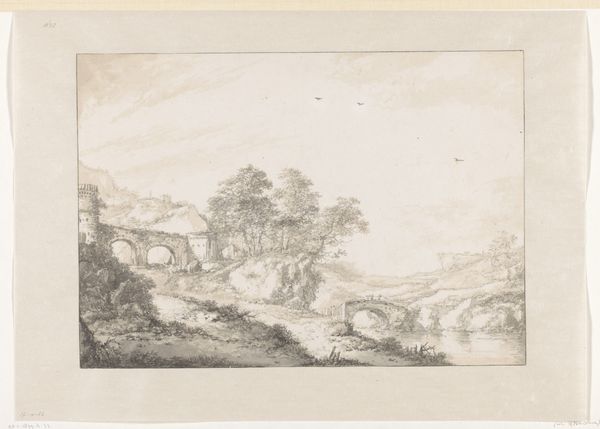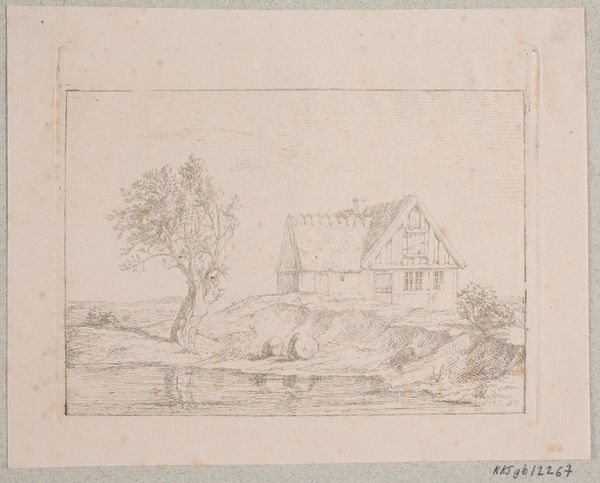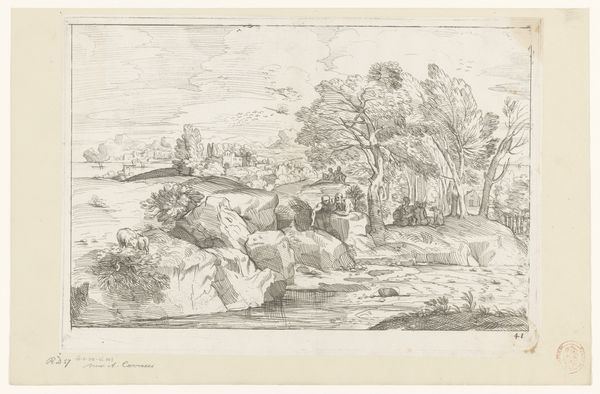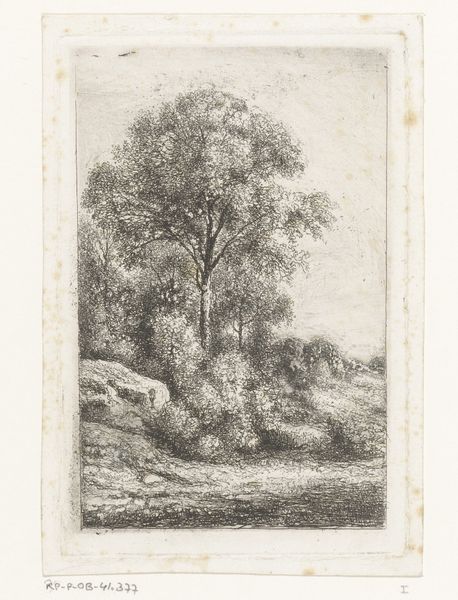
Mountainous Landscape with a Rock, Trees, and Buildings 1517 - 1523
0:00
0:00
drawing
#
drawing
#
landscape
#
form
#
line
#
italian-renaissance
Dimensions: 6 7/8 x 5 13/16 in. (17.5 x 14.7 cm)
Copyright: Public Domain
Curator: Take a look at this Renaissance drawing, "Mountainous Landscape with a Rock, Trees, and Buildings," created by Domenico Campagnola between 1517 and 1523. It's currently housed at the Metropolitan Museum of Art. What’s your initial read? Editor: There’s a striking stillness, a meditative quality. It's sepia-toned, of course, given the medium, and there's something almost dreamlike in the way the scene unfolds. I’m drawn to the massive rock dominating the foreground; it’s clearly important. Curator: It is interesting how Campagnola focuses on the foreground. This drawing exemplifies how artists in the Veneto region embraced landscape, imbuing nature with symbolic and emotional depth. Editor: Absolutely. The rock, specifically, feels primal, enduring. It has these deliberate lines etched on it. A foundation upon which everything else – the buildings, the distant mountains – is built, literally and metaphorically. Are the buildings a reference to a specific place? Curator: Probably not. Campagnola was more interested in creating an idealized vision of the landscape rather than an exact replica. There was a growing market for these autonomous landscape drawings as the status of landscape art rose. This would have been seen as its own self-contained work of art rather than a preparatory study. Editor: I see echoes of earlier symbolism; rocks can represent steadfastness or refuge. Also, I'm seeing almost classical elements. Are those building roofs evocative of ancient temples? Curator: That's an interesting thought, though there isn't clear consensus that Campagnola sought to embed any distinct visual cues that alluded to antique religious structures. Regardless, his Italian Renaissance context suggests that these echoes certainly cannot be ruled out. But in terms of cultural interpretation, what does the location do to the reading? It's displayed in the Met now, as a curated display from a major collection. Does that alter the reading compared to how it would have been viewed when Campagnola made it? Editor: The institutional framing invariably adds layers of meaning, but perhaps there's a core element that persists across centuries: the universal appeal of a landscape promising stability and something timeless. It's like an archetypal scene lodged deep in the collective consciousness, a vision that speaks to human harmony within the larger context of nature, even when the historical contexts shift. Curator: Precisely. I suppose Campagnola wouldn't be completely off if he knew his work would spark dialogue across the ages.
Comments
No comments
Be the first to comment and join the conversation on the ultimate creative platform.

